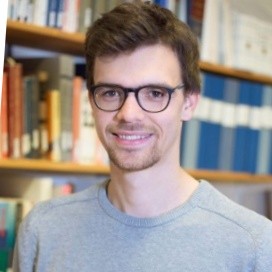Seminar by Jannik Theyssen
Railway noise, where complex issues lead to complicated problems
 Railway noise is at the center of complex issues such as the required shift to a more sustainable, rail-based transport, political interests, social and economic effects of newly built railway lines, and ecosystem impacts. Addressing these issues requires tools for quantifying, predicting and mitigating the effects of railway noise, as well as ways to communicate with a broader public. Frequency domain models can provide answers regarding the pressure levels and the effect of mitigation measures. An auralisation of railway noise can help to address the human perception of such noise and facilitate the communication with non-acousticians. In the presentation we will discuss some deterministic modelling approaches for the structural vibration in the railway track and sound radiation from the track such as the Waveguide Finite Element (WFE) method and the Wavenumber domain Boundary Element (WBE) method. Even though these methods have a significant computational advantage over standard 3D FE/BE approaches, the computation times are still not fit for generating sound signals adequate for auralisation. Instead, we will have a look at a recently developed, much more efficient method for generating such sound signals, and listen to some examples. The presentation aims to give some high level overview of the complex issues related to railway noise and then dives into the details of railway track modelling approaches.
Railway noise is at the center of complex issues such as the required shift to a more sustainable, rail-based transport, political interests, social and economic effects of newly built railway lines, and ecosystem impacts. Addressing these issues requires tools for quantifying, predicting and mitigating the effects of railway noise, as well as ways to communicate with a broader public. Frequency domain models can provide answers regarding the pressure levels and the effect of mitigation measures. An auralisation of railway noise can help to address the human perception of such noise and facilitate the communication with non-acousticians. In the presentation we will discuss some deterministic modelling approaches for the structural vibration in the railway track and sound radiation from the track such as the Waveguide Finite Element (WFE) method and the Wavenumber domain Boundary Element (WBE) method. Even though these methods have a significant computational advantage over standard 3D FE/BE approaches, the computation times are still not fit for generating sound signals adequate for auralisation. Instead, we will have a look at a recently developed, much more efficient method for generating such sound signals, and listen to some examples. The presentation aims to give some high level overview of the complex issues related to railway noise and then dives into the details of railway track modelling approaches.
Additional informations
- https://gofast.insa-lyon.fr/node/1561248
-
Salle de cours du LVA (Rdc Bat. St. Exupéry)

